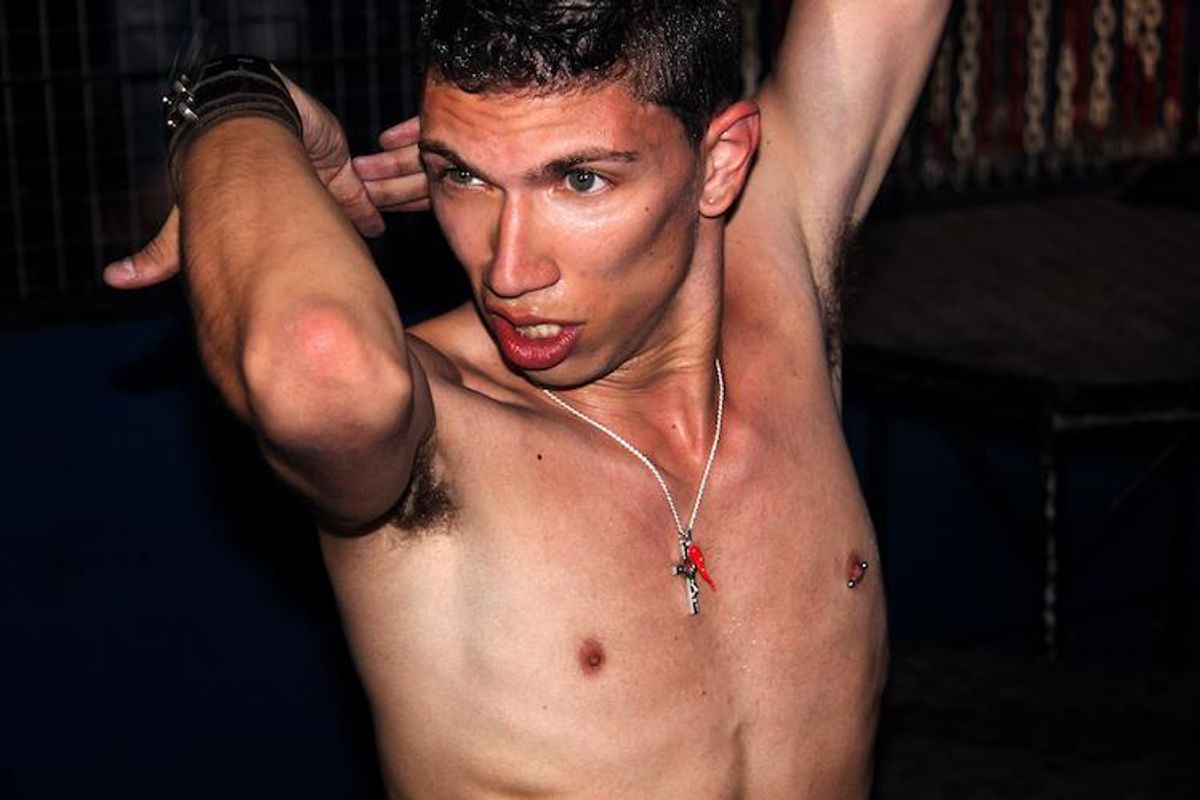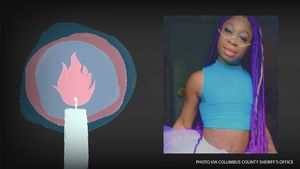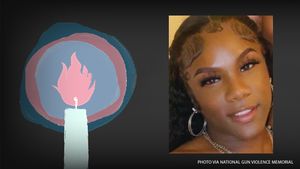Javier Ninja is a legend of the Ballroom. He has danced with Madonna and collected the most prestigious awards, time and time again. He's judged competitions around the world and become a cultural icon from Japan to Estonia thanks to his fierce and brutally confident performances. Born Javier Madrid, the 34-year-old has become one of the most important names in the Vogue scene today -- an iconic figure that commands respect.
When I first meet Javier in the flesh, I can't help but feel confused. He had wedged himself in the doorway, an overly ecstatic smile pulling away at his angular jaw. His bulging eyes dart around the crowd driven by mischievous intrigue. Somehow, these were same eyes that had once been so empty, barely visible above the Hannibal Lector muzzle he had once worn. "How's everyone doing?" he asks as he floats into the room. Some nod, others murmur. They continue to stretch and twist and twirl and do whatever it is that dancers always seem to do.
Related | Vogue the House Down with Glorious New Ballroom Doc Kiki
He goose-steps across the studio -- legs pushed upward and outward in exaggerated movements of grandeur. Though his hips are thrust forward, his spine gravitates backward. Eventually, a lyrical beat escapes the speakers, pulling Javier's body into the rhythm. The dancers stop to watch as Javier's warmth dissolves, replaced by the shattering coldness of his Vogue.
His movements are erratic yet organized; a chaotic performance executed with utter precision. His forearms fly over his head, up, down and around with increasing speed. His torso is static, divorced from the limbs that carry the dance forward.
Vogue is a relatively new phenomenon, so new that Javier was raised against the backdrop of its genesis.
Throughout the latter half of the 20th century, an underground Ballroom scene with roots in the Harlem Renaissance exploded. The annual Drag Ball morphed into a distinct, competitive phenomenon, occurring with increasing frequency throughout the 1980s and 90s.
The evolution of Ballroom culture was driven by the power of imagination. Abandoned by their biological kin because of their sexuality, many queer youth banded together to form alternative, familial structures, 'houses.' Each house was overseen by a designated mother and father. Once established, the houses would compete against one another in categories ranging from 'Best Dressed' to 'Butch Queen Realness.' While individual prizes and awards were up for the taking, the ultimate aim was to attain legendary status.
It was here that a highly stylized movement, known as Vogue, truly came into being. Vogue rests on the ability to create an alternate reality. As the name suggests, the movements were initially inspired by poses and looks adopted by the models of Vogue Magazine. Broadly speaking, it can be broken down into three distinct categories: 'Old-Way,' 'New Way,' and 'Vogue Fem.'
In 1990, Ballroom culture escaped the queer underground. Madonna's hit song, Vogue offered a superficial introduction to the art. Soon after, the forefathers of Ballroom culture -- Willi Ninja, Pepper Labeija, Dorian Corey -- were immortalized in the infamous documentary, Paris is Burning.
Competition is at the heart of Vogue, imparting urgency into the performance. However, there is something far greater, more transcendent than any catwalk or battle. It is about manufacturing a new reality, one far removed from the brutality of a decidedly heterosexual world. For those brief moments in which you 'walk'(compete), you are whatever and whomever you aspire to be. There is the possibility of rebirth, the rare ability to turn fantasy into reality.
While this cultural revolution was taking shape, a self-identifying 'math-nerd' from Queens was finding his footing in the world of ballet. "I loved it," Javier tells me of the five years he spent at The New Ballet School. For two days a week, he swapped the classroom for the studio. Though he speaks fondly of these days, it is clear his heart remained untouched, yet to be captured by the power of dance.
"Did you have a happy family life?"
"No. I was the black sheep. My father had left when I was born."
"Did you ever meet?"
"At 15"
"How was that?"
"Horrible. He was a douche."
By 16, Javier was falling hard for the seedy underbelly of Manhattan's nightlife. He had come out as gay, his hedonistic social life was thriving. Things could have gone south. And perhaps they should have. However, for Madrid, clubs became a refuge, the transcendent power of dance offering salvation. "I loved the clubs, I loved to dance. That was my outlet. That's how I met Willi and I started to Vogue." The Willie he is referring to? Willi Ninja, the Godfather of Vogue, founder of the House of Ninja.
The two met at the Stonewall Inn. It was a Wednesday night. Willi was hosting. Javier was probably drinking. Willie Vogued. Javier was captivated. "I ran behind the stage and waited for Willie to come out. I said 'OK, what was all that? I need to learn that now!'" Javier recalls, his voice giddy with the breathless excitement that only comes from first love.
In 2000, Javier Ninja was born. "Willi changed my life completely. He taught me what life was about...what to do, what not to do." A heaviness claws at his voice. The humor and nonchalance, so characteristic of the 34-year-old, vanishes.
For the first fleeting moment in our conversation, Javier is exposed, haunted by the memory of the life cut short.
Ten years later, Javier had established himself as a renowned teacher and mentor. It was time for Javier to impart his wisdom to the new generation of Voguers clamoring for knowledge. As per his relationship with Willi, the connections established speak to the deeper power of vogue. "A lot of these kids [are] depressed...You have to...make them see life in a totally new way." Drawing on his own experiences of hardship, Madrid was able to offer advice from a position of familiarity. Such is the repetitive nature of the pain experienced by those moving within the Ballroom scene.
Tragically, despite the social progress we have made, familial rejection amongst LGBT-identifying individuals remains all too common. This was as much a reality for the original Voguers as it is for the current generation. Indeed, according to the Ali Forney Center, an LGBT homeless youth shelter, up to 40% of New York City's homeless youth identify as LGBTQ. Whether expelled from their physical homes or not, family rejection has dire consequences. In 2016, a nationwide study revealed that, among transgender and gender nonconforming adults, family rejection was "associated with almost three and half times the odds of suicide attempts" compared to those not experiencing high levels of rejection. Though clearly sympathetic, when I touch on the issue of youth suicide, Javier's confirmation is a casual, testament to the frequency of occurrence.
Aside from being a mere lifeline, the houses ensure members are able to exist as healthy, autonomous individuals. The parents provide assistance with school and education, working with the kids to secure internships and jobs. Prospects of financial self-sufficiency become a potential reality. Many of the greatest Voguers have built entire careers outside the Ballroom, finding work primarily in design, fashion, and entertainment, while others have gone on to join professional dance companies.
Of course, for Javier, Vogue is his primary career. As the interview draws to an end, I ask if he remembers the moment he decided to devote his life to the performance.
"I made a promise to [Willi] when he was on his deathbed.... I told him... I was going to make his dream come true. He wanted vogue to be around the world. And we did it. It took us time, but we did it."
Photography by Riccardo Slavik
























































































